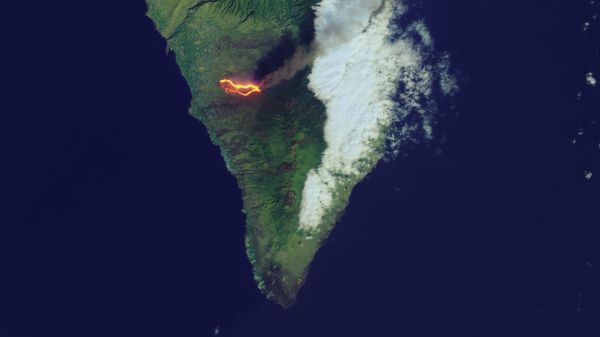When you buy through links on our website , we may bring in an affiliate commission . Here ’s how it knead .
material from Earth ’s mantle that were created within the first 50 million old age of thesolar system ’s birth have been discovered .
In fact , the material — discover within volcanic rock onCanada ’s Baffin Islandand in a region near the Solomon Islands in the South Pacific — is about 4.5 billion years old , investigator say in a newfangled study .

Canada’s Baffin Island, where researchers found the geochemical signature of material left over from Earth’s early development, about 4.5 billion years ago.
" The fact that these materials have survived through 4.5 billion years of dynamic Earth activity tell apart us something about the nature and limits of motion in Earth ’s Department of the Interior , the source of inundation [ volcanic ] basalt events and eventually about the processes that form the Earth , " say report co - researcher Richard Carlson , director of the Department of Terrestrial Magnetism at the Carnegie Institution for Science in Washington , D.C. [ Photo Timeline : How the Earth Formed ]
The Earth , which formed between 4.5 billion and 4.6 billion old age ago , take contour as subject surrounding the untested Sunday began to clump together . The heat of this thing coming together made the developing orb melt , and Earth presently separated into two main layers : an iron metal core on the inside and a silicate - rich mantle on the exterior .
For years , researchers thought that the early mantle had been destroyed as it evaporate and mixed into other , newer rock . But now , Modern chemical analyses show that some of it survive in rock formations called flood basalts , which were created byenormous lava eruptions .

Baffin Island is home to 4.5-million-year-old planetary material.
These lava rocks are only 60 million to 120 million yr onetime , but some of the textile within them contain firearm of the early Mickey Mantle , the researchers find .
To enquire , the researchers looked at dissimilar isotopes within the ancient lava flows . ( Isotopes are variation of an component that have dissimilar numbers racket of neutrons . ) In particular , they looked at isotopes of tungsten , an constituent that ’s commonly used in the filaments of incandescent light bulb .
Tungsten has particularly useful isotopes , the investigator say . When an isotope of the element hafnium ( hafnium-182 ) undergoes radioactive decomposition ( that is , give off radiation ) , itcreates tungsten-182 . Hafnium-182 went extinct within less than 50 million years after the formation of the solar organization , about 4.567 billion years ago , Carlson tell .

Moreover , it takes about 9 million years for hafnium-182 to decay into tungsten-182 , make it a honest meter of exceedingly old rocks , Carlson say .
After much research , the squad found basalt on Baffin Island from a 60 - million - class - old volcanic eruption , and basalt on the Ontong Java Plateau ( just northwards of the Solomon Islands ) from an approximately 120 - million - year - old volcanic bam . Both of these basalts had slightly more tungsten-182 than young volcanic tilt , they happen . [ In Photos : The World ’s Oldest Living thing ]
The investigator were capable to measure these small differences in tungsten-182 thanks to improvements made to mass spectrometers , cock that can evaluate the mass of an element . ( Because isotope have a different telephone number of neutron , each isotope has a singular mass that the mass spectrometer can detect . )

" We have only had the ability to do this for about a decade , " Carlson tell Live Science in an electronic mail . " And in that decade , we are getting a much clear picture of the event that pass off over the first ten to hundreds of millions of years of Earth history . "
The study was release online today ( May 12 ) in thejournal Science .
















